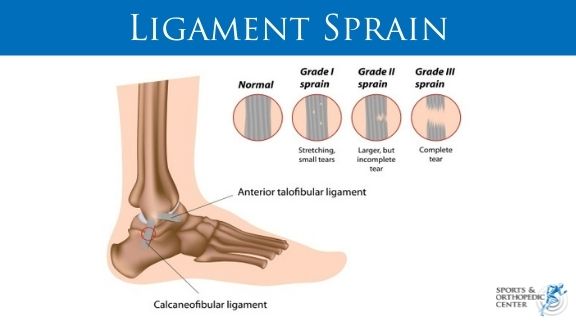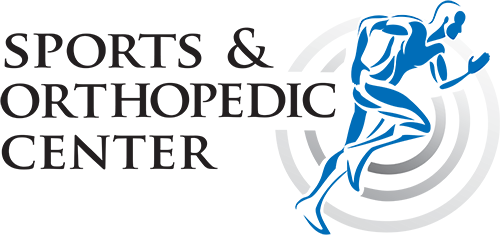LIGAMENT SPRAINS OR TEARS
Tears occur when fibrous tissue of a ligament, tendon, or muscle is ripped. Tears can be a result of the same movements that cause a sprain, however, a tear is a more serious injury.
While minor tears can take several weeks to heal, severe tendon and muscle tears may take several months. While rest and rehabilitation can be sufficient for minor tears, some tears can require surgery.
 Tear Symptoms
Tear Symptoms
Typical symptoms of a tear may include:
- Sudden, severe pain
- A “pop” sound during the time of the injury
- The feeling of a loose joint
- Inability to bear weight on the affected area
- Immediate bruising
- Immobility of the affected joint
- Visual deformity
TREATMENT FOR LIGAMENT SPRAINS OR TEARS
Treating sprains, strains and tears consists of taking steps to reduce the swelling and pain from the injury. Swelling is often the body’s first reaction for healing an injury. As fluid and white blood cells rush to the damaged tissue, it becomes inflamed in an effort to repair the tissue and protect it from further damage. However, the fluid can compress the nerves in the injured area and cause pain.
Excessive swelling can also potentially lessen the ligaments’, tendons’ and muscles’ flexibility, making the area more susceptible to future injuries. Mufich said these injuries are generally treated by following the plan “RICES.”
- Rest: Unpainful movement of the area is important, but avoid putting weight on the injury for a prolonged time, perhaps by using crutches, until it is less painful to use
- Ice: Apply ice, not heat, to the affected area for 10 to 20 minutes every hour or two throughout the first 24 to 72 hours or until the swelling subsides
- Compression: Wear an elastic compression wrap for the first 24 to 36 hours to help minimize any swelling
- Elevation: Rest the injury above heart level for two to three hours per day to reduce the amount of swelling that collects in the body’s extremities
- Stabilization: Especially if medical care is not readily available, like in the wilderness, stabilize the injured area until care becomes available
If you are still experiencing pain, reach out to one of our orthopedic specialists at Sports & Orthopedic Center for information on how to best manage and monitor your pain.


